Bayeux Tapestry to return to UK on loan after 900 years
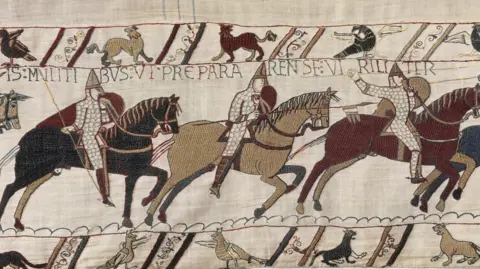 Bayeux Museum
Bayeux MuseumThe Bayeux Tapestry is returning to the UK more than 900 years after its creation, the Department for Culture, Media and Sport (DCMS) has confirmed.
The 70m-long masterpiece, which tells the story of the Norman conquest of England in 1066, will be loaned in a historic agreement to be signed between the French and British governments.
The huge embroidery - which is widely believed to have been created in Kent - will go on display at the British Museum in London next year.
In exchange, treasures including artefacts from the Anglo-Saxon burial mounds at Sutton Hoo and the 12th Century Lewis chess pieces will travel to museums in Normandy.
The Bayeux Tapestry will be displayed from next Autumn until July 2027, while its current home, the Bayeux Museum, is being renovated. 2027 is also the 1000th anniversary of the birth of William the Conqueror.
George Osborne, the British Museum's chair of trustees, told the BBC the exhibition "will be the blockbuster show of our generation" - like Tutankhamun and the Terracotta Warriors in the past.
Prime Minister Keir Starmer and French President Emmanuel Macron are expected to make the official announcement of the deal on Tuesday evening at Windsor Castle.
Culture Secretary Lisa Nandy called the loan "a symbol of our shared history with our friends in France, a relationship built over centuries and one that continues to endure".
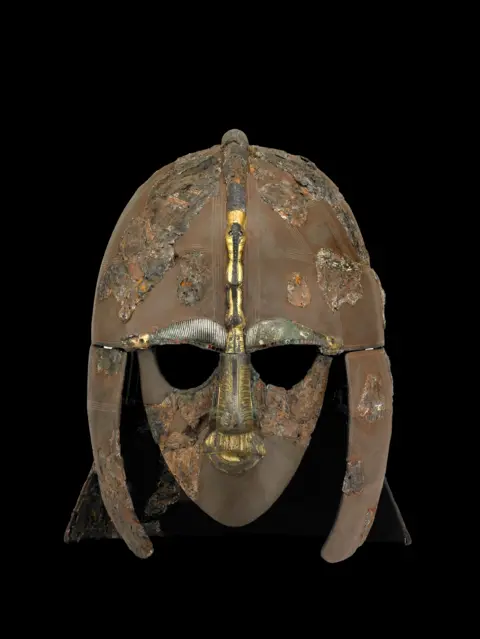 The Trustees of the British Museum
The Trustees of the British Museum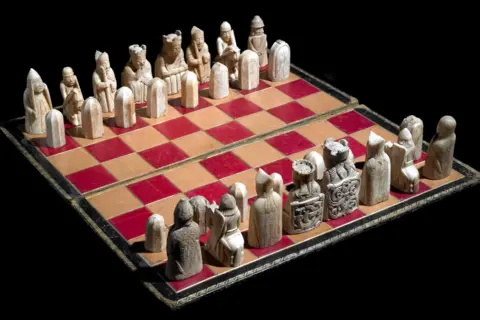 The Trustees of the British Museum
The Trustees of the British MuseumA loan was first suggested in 2018 between President Macron and then-Prime Minister Theresa May. It's taken until 2025 for it to become a reality.
The Bayeux Tapestry, which dates back to the 11th Century, charts a more contested time in Anglo-French relations, as Anglo Saxon dominance was replaced by Norman rule.
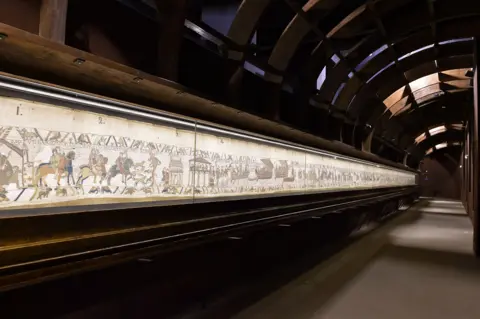 Bayeux Museum
Bayeux MuseumAlthough the final part of the embroidery is missing, it ends with the Anglo Saxons fleeing at the end of the Battle of Hastings in 1066.
Its 58 scenes, 626 characters and 202 horses give an account of the medieval period in Normandy and England like no other, offering up not just information about military traditions but also the precious details of everyday life.
The work has inspired many through the centuries, including artist David Hockney whose Frieze depicting the cycle of the seasons in Normandy was influenced by the Bayeux Tapestry.
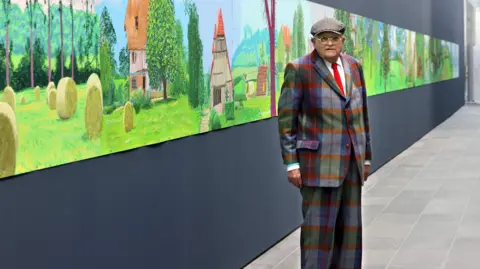 David Hockney/Getty Images
David Hockney/Getty ImagesThe British Museum's director, Nicholas Cullinan, said: "This is exactly the kind of international partnership that I want us to champion and take part in: sharing the best of our collection as widely as possible - and in return displaying global treasures never seen here before."
Eagle-eyed watchers of the British Museum may view this latest announcement as offering a template for the ongoing discussions with the Greek government about the future of the Parthenon Sculptures.
The Parthenon Project, a group which lobbies for the return of the classical marble sculptures to Greece, have suggested what they term a "win-win" solution, with never before seen items from Greece brought to the British Museum in exchange for the Parthenon works.
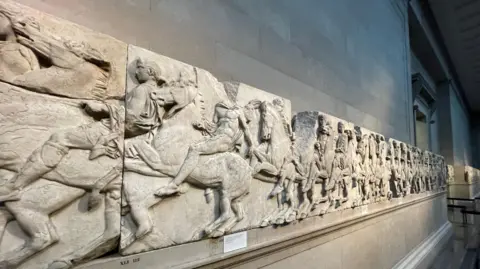 Jeff Overs/BBC
Jeff Overs/BBCToday's focus is closer to home and an exhibition that the British Museum expects will be one of its most popular ever, a once-in-a-generation show.
Every British schoolchild learns about King Harold, William the Conqueror and 1066.
As Osborne put it: "There is no other single item in British history that is so familiar, so studied in schools, so copied in art as the Bayeux Tapestry.
"Yet in almost 1,000 years it has never returned to these shores.
"Next year it will and many, many thousands of visitors, especially schoolchildren, will see it with their own eyes."
